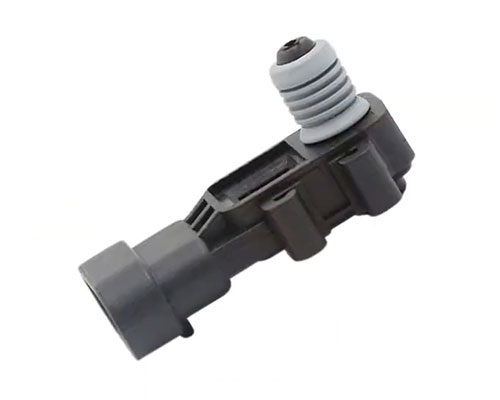Nestled within the hidden anatomy of modern vehicles, the fuel tank pressure sensor acts as a vigilant custodian of fumes and vacuum. Far more than a simple gauge, this electronic sentinel monitors the delicate atmosphere above the liquid fuel, safeguarding against harmful emissions and ensuring optimal engine performance. Its unblinking watch over gasoline vapors makes it a silent hero in the fight for cleaner air and efficient combustion.
The Breath of the Tank: How It Operates
At its core, the fuel tank pressure sensor is a specialized transducer, typically measuring both positive pressure and vacuum within the sealed fuel system. Most modern variants rely on a micro-machined silicon diaphram. As pressure changes occur within the tank—caused by fuel sloshing, temperature swings, or vapor generation—this tiny diaphragm flexes minutely.
Integrated strain gauges bonded to the diaphragm detect this flexing. The deformation alters the electrical resistance of these gauges in a precise, measurable way. This resistance change is converted into a variable voltage signal by the sensor’s internal circuitry. The voltage output is linear, proportional to the pressure or vacuum applied. Common operating ranges span from -15 kPa (vacuum) to +15 kPa (pressure), covering scenarios from aggressive fuel slosh to intense heat-induced vapor expansion.
Crucially, the sensor must distinguish between normal pressure fluctuations and system faults. Electronics constantly compare the signal against expected values based on engine load, temperature, and purge valve status. It communicates this data to the Engine Control Module via a standardized signal, usually 0.5V to 4.5V, where 0.5V represents strong vacuum, 2.5V signifies atmospheric pressure, and 4.5V indicates significant positive pressure. This continuous dialogue allows the ECM to manage the Evaporative Emission Control System.
Guardianship in Action: Why It Matters
The fuel tank pressure sensor plays pivotal roles in emissions compliance, safety, and performance:
Emissions Enforcement: Its primary mission is enabling the EVAP system. By detecting tiny pressure changes, it helps the ECM identify leaks as small as 0.5mm—critical for passing stringent OBD-II diagnostics. During the “leak test” phase (often performed shortly after engine shut-off), the sensor monitors tank pressure decay. An unexpected drop signals a leak, triggering the “Check Engine” light. It also controls the purge valve, allowing stored fuel vapors to be safely drawn into the engine for combustion only when conditions are optimal, preventing raw hydrocarbon release.
Safety and System Integrity: Excessive positive pressure can strain tank seams or valves, risking fuel odor or seepage. Strong vacuum can collapse flexible tanks or draw contaminants into the system. The sensor alerts the ECM to these extremes, prompting protective actions like venting via the charcoal canister or aborting a purge cycle. In hybrid vehicles, managing tank pressure during long electric-only drives is particularly crucial to prevent vapor lock or tank deformation.
Engine Performance Optimization: Accurate vapor management ensures the air-fuel ratio remains precise. If unmeasured fuel vapors unexpectedly enter the intake manifold, the mixture becomes rich, causing rough idling, hesitation, or increased emissions. The sensor’s data allows the ECM to compensate fuel injection timing instantly, maintaining smooth operation and fuel efficiency.
Facing the Fumes: Challenges and Evolution
Operating inside a fuel tank presents a hostile environment. Sensors endure constant exposure to aggressive hydrocarbon vapors, temperature extremes (-40°C to +125°C), and corrosive additives like ethanol. Seals must be impervious to permeation, typically using fluoroelastomers like Viton. The sensing element itself is often coated or potted for chemical resistance. Condensed fuel droplets must not compromise the delicate diaphragm or internal electronics.
Early Fuel Tank Pressure Sensors faced reliability issues. Modern designs incorporate robust stainless steel or anodized aluminum housings, advanced hydrocarbon-resistant coatings, and sophisticated signal conditioning. Diagnostics have also evolved. Smart sensors now perform self-checks, identifying internal faults like signal drift or circuit degradation, and report these directly to the ECM via enhanced fault codes.
Looking forward, integration intensifies. Combined pressure/temperature sensors reduce components. Wireless variants simplify installation in complex tank geometries. As hydrogen fuel cell and high-pressure CNG vehicles advance, specialized sensors rated for extreme pressures are emerging. Yet, the core function persists: vigilantly monitoring the volatile atmosphere above the fuel, ensuring every vapor is accounted for and every journey remains clean. The automotive world remains heavely dependant on this unsung component’s silent vigilance, its role in environmental protection fundamentle to modern mobility.

